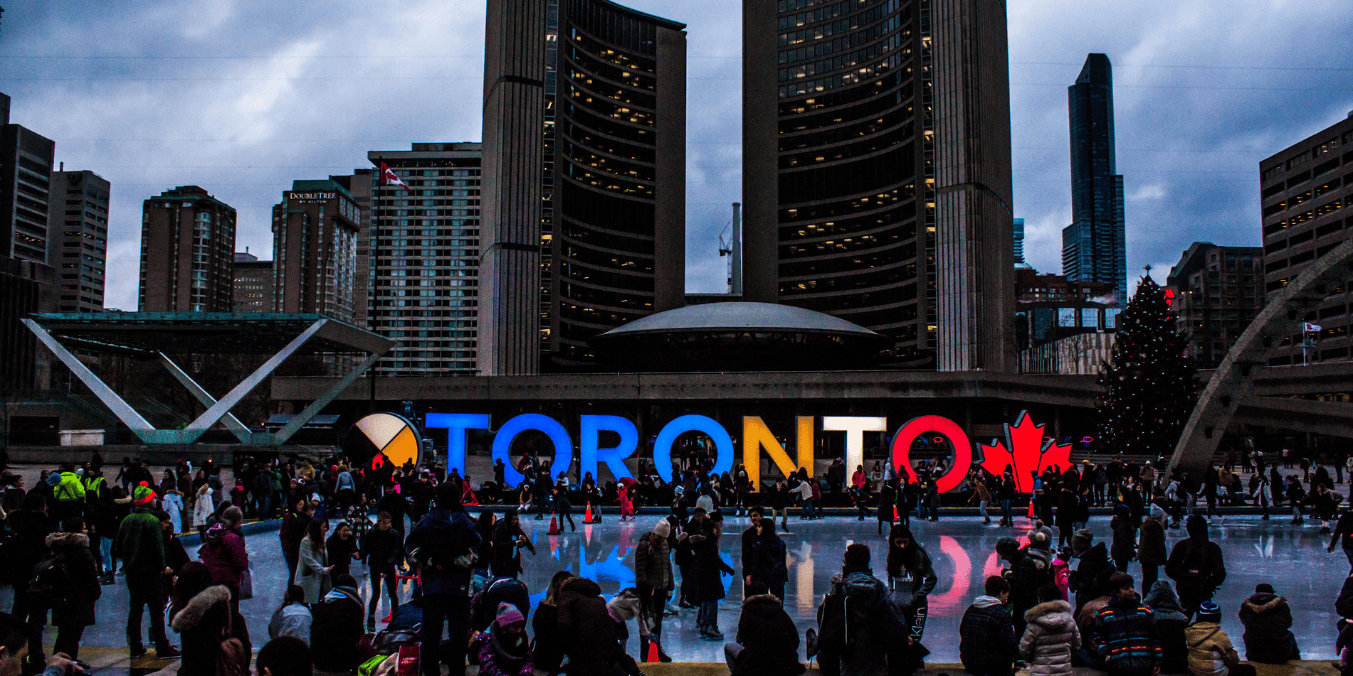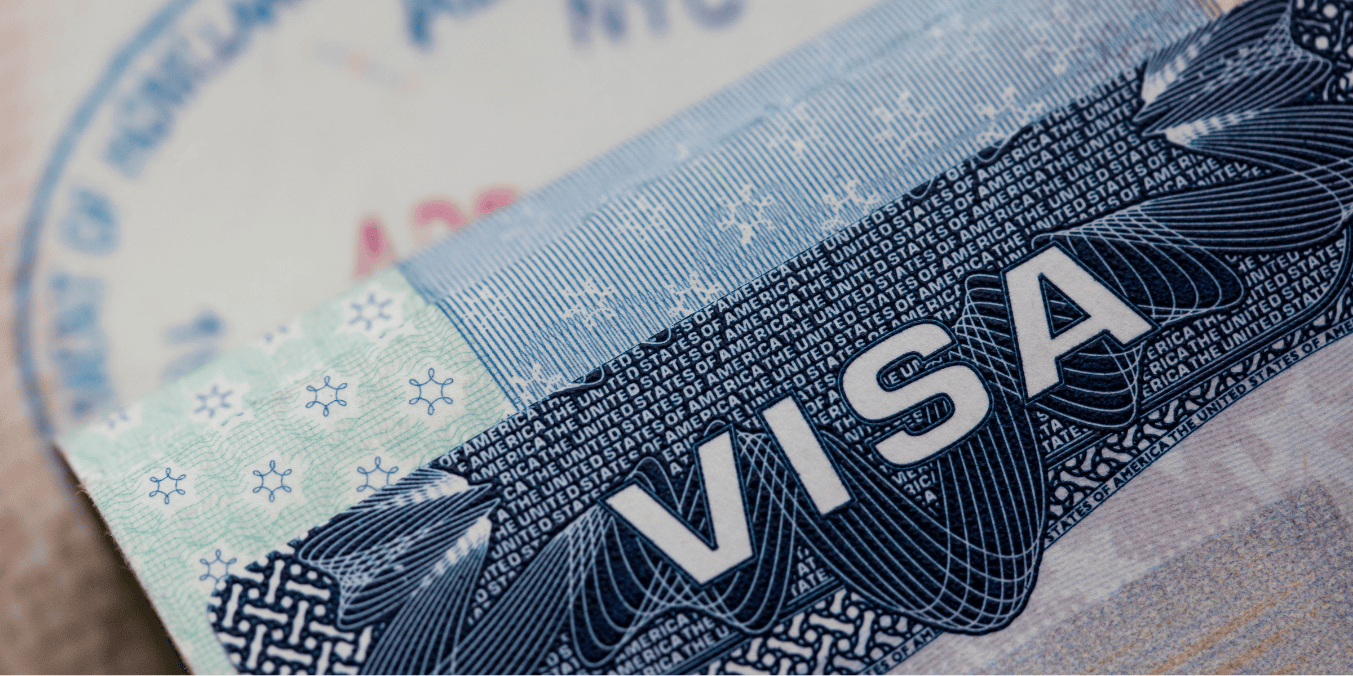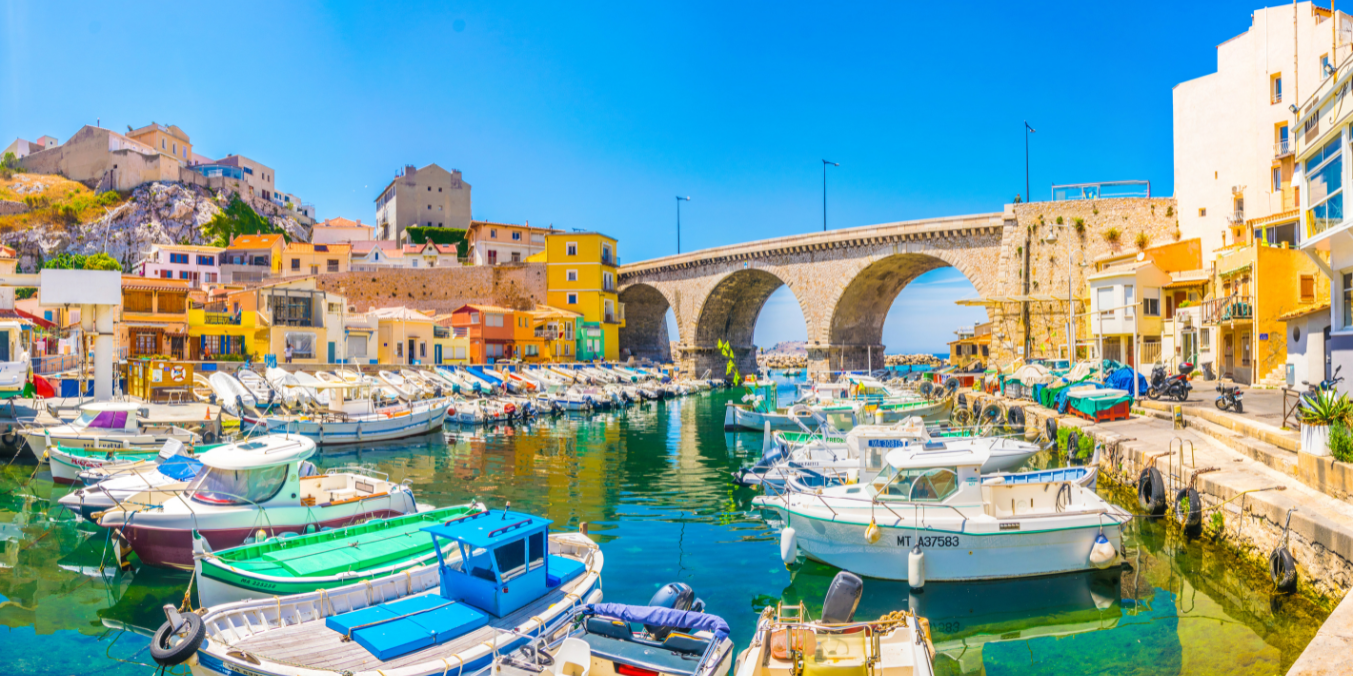When choosing between life in Canada vs France, whether as an expat or a local resident, it’s essential to consider key factors like culture, work-life balance, cost of living, and quality of life. Both Canada and France are highly developed countries, offering unique lifestyles, job opportunities, and cultural experiences. While Canada is known for its vast landscapes, diverse population, and high standard of living, France offers rich history, world-renowned cuisine, and a blend of urban sophistication and rural charm.
In this comprehensive comparison of life in Canada vs France, we’ll explore critical differences across various aspects such as work, education, healthcare, and cost of living. Our goal is to help you make an informed decision about which country better aligns with your personal or professional goals. By the end of this guide, you’ll have a clearer understanding of whether life in Canada vs France suits your needs better.
Immigration news directly into your inbox
Cultural Differences
One of the most noticeable distinctions between life in Canada vs France is the cultural environment. Both countries are home to rich histories and diverse populations, but the way culture shapes everyday life is quite different.
Language and Communication
Canada is officially a bilingual country, with both English and French as official languages. The French-speaking population is concentrated primarily in Quebec, though French is widely understood in many regions. Canada’s bilingualism fosters a culture of inclusivity and encourages communication across different linguistic groups. On the other hand, France is predominantly a French-speaking country, with a much stronger emphasis on maintaining the French language as a cornerstone of its national identity. While English is increasingly spoken, especially in larger cities, communicating effectively often requires fluency in French.
Festivals and Traditions
In terms of traditions, France places a strong emphasis on cultural preservation through its rich tapestry of festivals and celebrations. From the Bastille Day celebrations to regional festivals that celebrate wine, food, and the arts, France’s culture is deeply rooted in its historical heritage. Canada, in contrast, has a more multicultural approach, with a blend of traditional European festivals and those from diverse immigrant communities. Events like Canada Day and various ethnic festivals showcase the country’s broad spectrum of cultures.
Overall, when comparing life in Canada vs France, the cultural experiences in both countries offer something unique—France with its deep-rooted traditions and Canada with its blend of cultures and languages.

Work-Life Balance
When comparing life in Canada vs France, the differences in work-life balance are significant. Both countries offer strong protections for workers, but their approaches to employment, work hours, and vacation policies differ greatly.
Working Hours and Employment Trends
In Canada, typical working hours are around 40 hours per week, similar to many other Western countries. However, Canada’s job market is highly flexible, with many opportunities for part-time, remote, and freelance work, particularly in sectors like technology and business services. On the other hand, France is known for its strict labor laws, which favor employees. The standard workweek in France is set at 35 hours, and employees are often protected by strong labor unions, providing them with additional job security and rights.
Vacation Time and National Holidays
Another critical difference in life in Canada vs France is the approach to vacation time. France is famous for its generous vacation policies, with employees entitled to at least five weeks of paid vacation each year. This is a reflection of the country’s deep commitment to maintaining a healthy work-life balance. In addition, France has numerous public holidays, and many businesses shut down entirely in August for the summer holidays.
In contrast, Canada offers fewer vacation days, with most employees receiving around two to three weeks of paid leave. However, the flexibility in Canada’s job market means that many people can arrange time off more freely, especially in industries with more liberal working environments.
In terms of work-life balance, life in France offers more structured downtime, while life in Canada provides flexibility in how and when people work.
| Aspect | Canada | France |
|---|---|---|
| Standard Workweek | 40 hours per week | 35 hours per week |
| Vacation Entitlement | 2–3 weeks of paid vacation | At least 5 weeks of paid vacation |
| Public Holidays | 10–12 days (varies by province) | 11 days, with longer summer holidays |
| Flexibility | High flexibility in job types (remote, part-time, freelance) | More structured, less flexible |
| Job Security | Moderate (depending on sector) | High, with strong labor union protections |
| Work-Life Balance | Flexible, but less vacation time | More emphasis on leisure and downtime |
Education System
The education systems in Canada and France reflect the distinct values and approaches of each country. Both nations have strong public education sectors, but there are significant differences in structure, curriculum, and emphasis.
Schooling Structure in Canada
In Canada, education is largely decentralized, with each province responsible for its own curriculum. School is mandatory for children between the ages of 5 or 6 and 16 or 18, depending on the province. The system is generally divided into elementary school, secondary school, and post-secondary education. Canadian schools emphasize a well-rounded education, with a focus on critical thinking, creativity, and diverse learning environments. Additionally, many schools offer bilingual programs in English and French, especially in regions like Quebec and New Brunswick.
Post-secondary education in Canada is also highly regarded, with universities and colleges known for their diverse programs and research opportunities. Canadian universities like University of Toronto and McGill University attract students from all over the world due to their affordability (compared to the U.S.) and high academic standards.
Education in France: Emphasis on Rigor
In France, the education system is much more centralized and structured, with strict national standards. The French system is known for its emphasis on academic rigor and discipline. School is compulsory for children from ages 3 to 16, starting with école maternelle (preschool) and progressing through école élémentaire (elementary school), collège (middle school), and lycée (high school).
One key aspect of life in France is the emphasis on national exams. Students are required to pass the Baccalauréat, a comprehensive exam that determines their eligibility for higher education. French universities, such as Sorbonne University and École Polytechnique, are internationally recognized, but the system is highly competitive and academic-focused. The French education system is often considered more rigorous than Canada’s, but some argue it leaves less room for creativity and flexibility.

Healthcare Systems
Both Canada and France are known for their universal healthcare systems, but there are key differences in how these services are delivered and accessed. Understanding these differences is essential when comparing life in Canada vs France.
Public Healthcare in Canada
Canada’s healthcare system, known as Medicare, provides universal coverage for all citizens and permanent residents. Funded by taxes, it ensures that essential medical services are free at the point of use. Each province manages its own healthcare system, meaning there can be slight variations in coverage, but most Canadians have access to physician visits, hospital stays, and basic medical procedures without out-of-pocket costs.
However, certain services such as prescription medications, dental care, and vision care are not always covered, and many Canadians rely on supplemental private insurance for these. Waiting times for certain procedures can also be an issue in Canada, especially in more densely populated areas.
Universal Healthcare in France
In France, the Sécurité Sociale provides universal healthcare coverage, with a system that blends public and private services. While most medical care is publicly funded, patients are expected to pay a small percentage of their medical costs upfront, which is later reimbursed by the government. For example, visits to a general practitioner are partially reimbursed, and additional private insurance (known as mutuelle) is often used to cover the remaining costs.
One advantage of life in France is the shorter waiting times for medical services, as the system is designed to provide quick access to care. The quality of healthcare in France is highly regarded globally, with a focus on preventive care and specialized treatment. Moreover, services like maternity care and mental health services are particularly robust in France compared to other countries.

Cost of Living
When comparing the cost of living in Canada vs France, significant differences emerge in terms of housing, transportation, food, and daily expenses. While both countries offer a high standard of living, the cost structure can vary widely depending on the city and region.
Housing and Real Estate Prices
In Canada, housing costs vary greatly by city. Major urban centers like Toronto, Vancouver, and Montreal can be expensive, with real estate prices continuing to rise. Renting is often a more affordable option, but rent in cities like Toronto and Vancouver remains high compared to smaller towns.
In contrast, France offers a range of housing options, with Paris being one of the most expensive cities in the world for real estate. Outside of Paris, however, housing costs tend to be more affordable. Cities like Lyon and Marseille offer cheaper alternatives with a high quality of life, making France’s overall real estate market more balanced than Canada’s.
Everyday Expenses: Food, Transport, and Entertainment
The cost of everyday expenses also varies between life in Canada vs France. In Canada, groceries can be quite expensive, especially for imported goods. However, transportation costs in Canada are generally manageable, with public transit systems in large cities being relatively affordable and efficient. Car ownership is more common due to the vast distances between cities and less developed public transportation networks outside of urban areas.
In France, food is generally more affordable, particularly if you shop at local markets. The country is known for its fresh produce and high-quality ingredients, often available at lower prices than in Canada. Public transportation in France is highly developed and more accessible, especially in major cities like Paris, where metro systems and trains make commuting easy. Entertainment and dining out in France can also be less expensive, particularly in comparison to large Canadian cities.
| Aspect | Canada | France |
|---|---|---|
| Housing Costs | High in major cities (Toronto, Vancouver); more affordable in smaller towns | Expensive in Paris, more affordable in other cities (Lyon, Marseille) |
| Renting vs Buying | Renting more affordable in urban areas, but prices still high | Renting and buying are generally cheaper outside of Paris |
| Groceries and Food | Higher prices, especially for imported goods | Fresh produce and local markets make groceries more affordable |
| Transportation | Public transit affordable in cities, car ownership common in rural areas | Excellent public transit systems, especially in Paris; car ownership less common |
| Entertainment and Dining Out | More expensive in major cities like Toronto and Vancouver | Typically less expensive, especially outside of Paris |
Transportation and Infrastructure
Transportation and infrastructure are key elements when comparing life in Canada vs France. The two countries offer distinct systems for getting around, with notable differences in public transit, road networks, and environmentally friendly options.
Public Transit in Major Cities
In Canada, public transportation is widely available in major urban centers, such as Toronto, Vancouver, and Montreal. These cities have efficient metro systems, buses, and regional trains, but outside of urban areas, public transportation options become more limited. Canadians in rural or suburban areas often rely on cars due to the country’s vast geography and less extensive public transit networks.
On the other hand, France offers one of the most sophisticated public transit systems in the world. In cities like Paris, the metro is highly efficient, with trains arriving every few minutes. France also has an excellent national rail system, including the high-speed TGV, which makes traveling between cities fast and convenient. Public transportation is more accessible in both urban and rural areas, reducing the need for car ownership in many regions.
Roads, Bicycles, and Eco-friendly Alternatives
When it comes to road infrastructure, Canada boasts well-maintained highways and extensive road networks, but long distances between cities make car travel more time-consuming. Bicycle infrastructure is growing in popularity in Canadian cities, especially in places like Vancouver and Montreal, but it’s not as common across the country.
In contrast, France has made significant strides in promoting eco-friendly transportation. In addition to its well-developed road networks, many French cities have implemented extensive bicycle-sharing programs and bike lanes to encourage sustainable commuting. Electric vehicle charging stations and public bike-sharing schemes like Vélib’ in Paris make France a leader in environmentally conscious transportation.

Social Life and Lifestyle
When considering life in Canada vs France, the differences in social life and lifestyle are stark. While both countries offer rich cultural experiences, the ways in which people socialize and engage with their communities vary significantly.
Socializing in Canada: A Laid-Back Approach
In Canada, social life is often described as laid-back and welcoming. Canadians are known for being friendly and polite, and social gatherings often take place in informal settings, such as backyard barbecues, parks, or cafés. The multicultural makeup of the country also means that people have the opportunity to experience a variety of cultural events, such as Chinese New Year, Caribbean festivals, and Indigenous celebrations.
While major cities like Toronto and Vancouver have bustling social scenes, with plenty of restaurants, theaters, and nightclubs, Canadians tend to value their work-life balance, which often leads to a more relaxed social life compared to fast-paced European cities. Outdoor activities like hiking, camping, and winter sports are also important parts of the Canadian lifestyle, especially given the country’s natural beauty.
France: Socializing in Cafés and Cultural Experiences
In France, social life revolves heavily around café culture and cultural experiences. People often gather at cafés or bistros for long conversations over coffee or wine. Meals are seen as social events in themselves, with the French prioritizing time spent with friends and family at the dinner table. Social life in France is more formal than in Canada, with greater emphasis placed on etiquette and tradition.
France is also known for its deep connection to the arts. Whether it’s attending a theater performance, a music concert, or visiting one of the many museums and galleries scattered throughout the country, social life in France is often intertwined with cultural enrichment. Cities like Paris and Lyon are renowned for their lively cultural scenes, offering a wide range of social activities.

Climate and Geography
The climate and geography in Canada vs France are vastly different, shaping the daily lives and activities of their residents. Both countries boast natural beauty, but the weather conditions and geographical landscapes vary greatly.
Canada’s Diverse and Extreme Weather
Canada is known for its diverse climate, which ranges from arctic conditions in the northern territories to milder climates on the Pacific coast. The country’s sheer size means it experiences a wide range of weather patterns. Winters in Canada are typically long and harsh, particularly in the Prairie provinces and central regions like Ontario and Quebec, where temperatures can plunge well below freezing, and snowfall is heavy.
On the other hand, the west coast, particularly in Vancouver, enjoys a much milder, rainier climate. Summers in most parts of Canada are warm, and in some regions, like Southern Ontario, they can be quite hot and humid. Canadians are accustomed to adapting to these extremes, and outdoor activities like skiing, snowboarding, and ice skating are popular in the winter months, while hiking and camping dominate the warmer seasons.
France’s Mediterranean and Continental Climate
In contrast, France enjoys a more temperate climate, though it varies from region to region. The northern part of the country, including Paris, experiences a continental climate with warm summers and cold winters, but these are typically much milder than what Canadians experience. The southern part of France, particularly along the Mediterranean coast, benefits from a Mediterranean climate, with hot, dry summers and mild, wet winters, making it a popular destination for tourists year-round.
France’s geography is also diverse, with mountain ranges like the Alps and Pyrenees offering skiing opportunities in winter, while its coastlines along the Mediterranean and Atlantic provide beach getaways in the summer. Overall, the climate in France is more predictable and moderate, offering more year-round comfort compared to the extreme seasonal variations seen in Canada.

Family and Social Values
When comparing life in Canada vs France, family structures and social values play an essential role in shaping everyday interactions. Both countries value family life, but the cultural attitudes towards family dynamics, gender roles, and social expectations differ significantly.
Family Dynamics in Canada: A More Liberal Approach
Canada is known for its progressive social values, and this is reflected in its approach to family life. Canadian families tend to embrace a more liberal and egalitarian structure, with both parents often sharing child-rearing and household responsibilities. Gender roles are increasingly flexible, and there is a growing focus on work-life balance to ensure time for family and personal well-being.
Canada’s multicultural society also means that family dynamics vary depending on cultural backgrounds, but inclusivity is a hallmark of Canadian social values. For example, the country is a leader in LGBTQ+ rights, and same-sex marriages are legally recognized and socially accepted. Canadian society values individual freedom and diversity, which allows families to define their roles and values based on personal choices.
Family Values in France: Tradition and Structure
In contrast, France maintains a more traditional approach to family life. While French society has become more progressive over time, family values are still deeply rooted in structure and tradition. In most families, there is a strong emphasis on mealtime as a family event, where children are expected to follow proper etiquette. The extended family plays an important role in social life, and it is common for grandparents to be actively involved in the upbringing of children.
Gender roles in France are evolving, but traditional family dynamics remain prevalent, with mothers often taking on more of the child-rearing responsibilities, especially during the early years. However, France has a strong system of childcare and parental leave, making it easier for both parents to balance work and family life.

Political Systems and Governance
The political systems in Canada vs France are both democratic, but they operate under different frameworks, each with its own unique structure and set of principles. Understanding these systems can provide insight into how governance and decision-making affect daily life in each country.
Canada’s Federal Parliamentary System
Canada operates under a federal parliamentary democracy and is part of the Commonwealth, with the British monarch serving as the ceremonial head of state. The Prime Minister is the head of government and is responsible for running the country, elected through a system of representative democracy. Canada’s political structure is divided into federal, provincial, and municipal levels, allowing regions to manage their own policies to a significant extent. This decentralized system provides provinces like Quebec or Alberta the ability to enact laws that reflect their unique needs.
Elections are held every four years, and Canadians vote for Members of Parliament (MPs) who represent their interests in the federal government. Canada is known for its stable political environment and strong emphasis on multiculturalism, with political policies reflecting the country’s commitment to diversity and inclusion.
France’s Semi-Presidential Republic
France operates under a semi-presidential republic, which means that the country is governed by both a President and a Prime Minister. The President, who is elected directly by the people for a five-year term, holds significant power, especially in areas of foreign policy and defense. The Prime Minister is appointed by the President and oversees domestic policies and the day-to-day running of the government.
France’s political system is centralized, with most decision-making occurring at the national level. While there are regional governments, they have less power compared to Canada’s provinces. French politics often focus on secularism (laïcité), social welfare programs, and maintaining a strong presence on the global stage.

Immigration Policies
When comparing life in Canada vs France, one major difference is their approach to immigration policies. Both countries accept immigrants, but Canada is known for its more open and welcoming approach, while France has a more restrictive but evolving stance.
Canada’s Welcoming Approach to Immigrants
Canada is renowned globally for its pro-immigration policies. The country actively encourages immigration to address labor shortages, support economic growth, and foster diversity. Canada offers a variety of immigration pathways, including the Express Entry system, Provincial Nominee Programs (PNPs), and programs for family sponsorship, refugees, and international students. The Express Entry system is a points-based immigration program that prioritizes skilled workers based on factors like age, education, work experience, and language proficiency.
Canada’s multiculturalism means immigrants are generally well-integrated into society, with many resources and programs available to help newcomers adjust. Permanent residency can be achieved relatively quickly, and there is a clear path to citizenship after a few years of residency. Canada’s high immigrant acceptance rates reflect the country’s commitment to building a diverse and inclusive society.
France’s Strict but Evolving Immigration Policies
In contrast, France has traditionally had stricter immigration policies, though this has evolved in recent years. Immigration in France is more regulated, with stringent requirements for work permits, residency, and citizenship. The country operates within the framework of European Union immigration policies, which makes it easier for EU citizens to move to France, while non-EU immigrants face more hurdles.
France offers several visa categories, including those for skilled workers, students, and family reunification. However, the process can be more bureaucratic and slower compared to Canada. Integration into French society can also be more challenging due to language barriers and cultural differences. However, recent reforms aim to streamline the immigration process, particularly for skilled workers and entrepreneurs.

Food and Cuisine
One of the most delightful differences when comparing life in Canada vs France is the food culture. Both countries offer diverse and rich culinary traditions, but the approach to food, dining, and daily meals is quite distinct.
Culinary Traditions in Canada: A Blend of Cultures
Canada is known for its multicultural culinary landscape, reflecting the country’s diverse population. Canadian cuisine is a fusion of global influences, with traditional dishes from Indigenous, European, Asian, and Middle Eastern communities contributing to a vibrant food scene. In cities like Toronto and Vancouver, it’s common to find a wide range of international cuisines, from Indian and Chinese to Italian and Lebanese.
While Canada is not traditionally seen as a global culinary hub, the country has its own unique dishes. Poutine (fries topped with cheese curds and gravy), Nanaimo bars, and butter tarts are Canadian staples, and seafood is especially popular in coastal regions. Canadians also value farm-to-table dining, with a focus on fresh, locally sourced ingredients.
France: A Culinary Hub of the World
France is renowned as one of the world’s most celebrated food cultures, with a deep respect for culinary tradition. French cuisine is known for its regional diversity, with dishes like coq au vin, boeuf bourguignon, and ratatouille being iconic examples of French gastronomy. French food is often defined by its emphasis on quality ingredients, precise preparation, and presentation.
Meals in France are seen as a social experience, with multi-course dinners being a regular part of daily life. Bread, cheese, and wine are staples of the French diet, and bakeries are a common sight, offering everything from freshly baked baguettes to croissants. The country’s love for food extends beyond the kitchen, as gastronomy is an integral part of French culture, with events such as the Michelin Guide and Bocuse d’Or celebrating the best chefs and restaurants in the world.

Quality of Life Rankings
Both Canada and France are known for offering high standards of living, but the factors contributing to quality of life vary between the two countries. In terms of work-life balance, healthcare, education, and overall well-being, each country excels in different areas.
Canada’s High Quality of Life: Focus on Inclusivity and Well-Being
Canada consistently ranks among the top countries for quality of life. The nation’s emphasis on healthcare, education, and multiculturalism ensures that its residents enjoy a high standard of living. With universal healthcare and excellent public education systems, Canada provides strong support for families and individuals alike.
Canada also stands out for its low crime rates, political stability, and focus on personal freedom. The country’s vast natural landscapes and clean environment also contribute to a healthy and active lifestyle, with outdoor activities like hiking, skiing, and camping widely accessible.
Additionally, Canada’s emphasis on work-life balance, while not as generous as France’s in terms of vacation time, still ensures flexibility and opportunities for personal growth and relaxation.
France’s Balance of Leisure and Work
France is renowned for its work-life balance, with generous vacation policies and a strong focus on leisure. The French take their personal time seriously, and this is reflected in their longer holidays and shorter workweeks. France’s healthcare system, ranked among the best in the world, also ensures that citizens have access to high-quality care.
In terms of education, France’s system is rigorous, but it consistently produces high-achieving students, particularly in the areas of science and arts. The cultural richness and deep connection to history also contribute to a high quality of life, offering residents and visitors a lifestyle centered around art, food, and community.
While France has some social challenges, including occasional political unrest, the country’s overall quality of life remains high, particularly in urban centers like Paris and Lyon, where cultural amenities are abundant.
Are you ready to get started, or not sure which option is best for you?
Find out how you can move to Canada.
Challenges and Opportunities
While both Canada and France offer high standards of living, each country faces unique challenges and presents different opportunities for those looking to live, work, or settle. These aspects play a significant role in shaping the overall life in Canada vs France experience.
Career Opportunities and Economic Growth
Canada is often seen as a land of opportunity, particularly for skilled workers. The country’s economy is growing steadily, with strong demand for professionals in sectors like technology, engineering, healthcare, and finance. Canada’s immigration policies also make it easier for skilled workers to move and integrate into the workforce. With its focus on innovation and natural resources, Canada presents excellent career opportunities, especially in fast-growing cities like Toronto, Vancouver, and Calgary.
However, Canada’s large geographic size can pose challenges in terms of finding jobs in specific regions. For instance, economic opportunities may be concentrated in certain urban areas, leaving smaller towns and rural regions with fewer job prospects.
France: Social Challenges and National Identity
In France, while there are strong career opportunities in fields like luxury goods, technology, and arts, the country also faces economic challenges. Unemployment rates in France, particularly among young people, have been higher compared to Canada. However, the French government has been making efforts to reform labor laws and encourage entrepreneurship.
Social challenges in France also revolve around multiculturalism and national identity. The country has a long tradition of secularism (laïcité), and in recent years, this has led to debates over immigration and the integration of different cultural groups. While France remains an attractive destination for its cultural richness and quality of life, navigating these social issues can be a challenge for newcomers.
Conclusion: Life in Canada vs France—Which is Right for You?
Deciding between life in Canada vs France ultimately comes down to personal priorities and what you value most in terms of lifestyle, career opportunities, and cultural experiences. Both countries offer high standards of living, but each excels in different areas.
Canada is a great choice for those seeking career growth, especially in fields like technology, engineering, and healthcare. Its welcoming immigration policies, multicultural society, and strong focus on work-life balance make it a top destination for newcomers looking for economic opportunities and a relaxed social environment. The emphasis on outdoor activities and the country’s natural beauty also contribute to Canada’s high quality of life.
On the other hand, France offers a rich cultural experience, with world-renowned cuisine, arts, and historical significance. France’s social values, particularly its focus on work-life balance and leisure, make it ideal for those who prioritize personal time and cultural immersion. However, navigating the bureaucratic system and addressing social challenges related to multiculturalism and immigration might present some hurdles.
Ultimately, whether you choose life in Canada or life in France, both countries offer a rewarding experience. Your decision will depend on factors such as career prospects, cultural preferences, and lifestyle goals.
FAQs: Life in Canada vs France
It depends on your preferences. Canada offers a multicultural environment, vast natural landscapes, and a higher focus on job opportunities in sectors like tech and healthcare. France, on the other hand, provides rich cultural heritage, excellent public services, and a strong emphasis on work-life balance. If you prefer outdoor living and diverse job opportunities, Canada may be better. If you appreciate a slower pace of life with access to European culture, France could be ideal.
Both economies are strong, but they differ. Canada has a resource-rich economy with strengths in natural resources, technology, and finance. France has a diversified economy with a strong industrial base and is known for luxury goods, tourism, and aerospace. Overall, Canada has a slightly lower unemployment rate and is considered more business-friendly.
Both countries are highly developed. Canada ranks slightly higher in terms of GDP per capita and living standards, with a modern healthcare system and strong education sector. France offers a more robust social welfare system, excellent public transport, and a rich cultural life. In terms of development, they are comparable but excel in different areas.
The majority of Canadians (about 75%) prefer English as their primary language. However, in the province of Quebec and some parts of New Brunswick, French is the dominant language. Canada is officially bilingual, so both English and French are widely supported.
Julce
Julce is an expert content writer specializing in topics about Canada, adept at blending practical advice with engaging stories that capture Canadian life.
Start Your Canadian Immigration Journey
Our experts make the process clear, stress-free, and successful, so you can move forward with confidence and focus on what matters most.

Contact Us
Immigration questions and service enquiries
Consultation
Speak to an expert
immigration consultant
"*" indicates required fields
